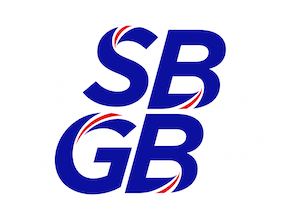Overcome your fear of falling
One of the most important skills to learn in skateboarding is falling. We know that making mistakes is a key component in the learning process. The more mistakes we make the faster we learn. We can take more risks and we can learn faster. Another aspect of this is that we can experiment more, and get more creative in our skating if we can fall. We can take our riding in other unexpected directions.
We’ve learnt how to fall elsewhere in our lesson about learning to fall. In this post I want to talk about some other methods of overcoming our fear of falling.
Get more pads
Kind of a no brainer, but an additional level of protection is hip pads, or impact pads, as they’re called. These should protect the hips and coccyx (tailbone). I personally never leave home without them. In the 90’s an old pal of mine cut up a camping mat and strapped it around his waist which earned him the moniker of ‘Hip Pads’. He went on to be quite successful.
One of the most important skills to learn in skateboarding is falling. We know that making mistakes is a key component in the learning process. The more mistakes we make the faster we learn. We can take more risks and we can learn faster. Another aspect of this is that we can experiment more, and get more creative in our skating if we can fall. We can take our riding in other unexpected directions.
We’ve learnt how to fall elsewhere in our lesson about learning to fall. In this post I want to talk about some other methods of overcoming our fear of falling.
Get more pads
Kind of a no brainer, but an additional level of protection is hip pads, or impact pads, as they’re called. These should protect the hips and coccyx (tailbone). I personally never leave home without them. In the 90’s an old pal of mine cut up a camping mat and strapped it around his waist which earned him the moniker of ‘Hip Pads’. He went on to be quite successful.
I often do this with students in lessons, I find something to do that I know is too difficult. There’s a three stair set at Deptford Skatepark which is perfect for this. Now I don’t mean throw yourself down some stairs. First find something easier that you have a moderate chance of making it down, like a kerb, and go at it. Just try and ride down it keeping your feet on, with the intention of exploring the process of experimentation & failure. At the end of that process is success (hopefully). When you’ve done the kerb, find a two set to muddle your way down. Learn how to fall without hurting yourself (this is key).
Persevere. Some people are born with it. Others have to develop it. When you aim to fall, you will need to get back up. By aiming to fall we build our perseverance levels.
Using your hands ride at floor level
We do go into this in some detail in our video on how to fall. Get close to the floor. It used to be that in skateboarding it was unfashionable to put your hands on the ground. This has changed with the fusion of all the different styles of skating from over the years. Actively use your hands when you’re learning and experimenting. The Bertslide, below, is a great skill for practicing use of your hands and being close to the ground. When pushing students to ride down the three set I say to them that they have to use their hands – that they need to have at least one hand on the floor at times to succeed.
Conditioning
The last point is about conditioning. Many skaters don’t wear pads because their bodies are conditioned to the rigours of the activity after years of doing it. Much like the practice of Shaolin monks. Remember conditioning is a mind and body thing. We can condition our bodies to impact, so that it becomes more tough physically, and less pain signals make it through to the brain, but the conditioning also occurs in the brain. The pain signals being sent to the brain may not be any different than those being sent a year ago, but as we grow accustomed to those pain signals the less we notice it.
The other aspect of conditioning is building strength & flexibility in the relevant muscles. When I say stay close to the ground this is easier said than done. Try squatting down on your board, touching the ground for one minute, or even ten seconds. It’s hard. Build the muscles in your legs so you can stay close to the ground when you need it.
In summary
- get more/better pads
- be near the ground
- put our hands on the ground to stabilise
- fall over. rinse and repeat
- perseverence
- find some stairs to roll down whilst enjoying it


